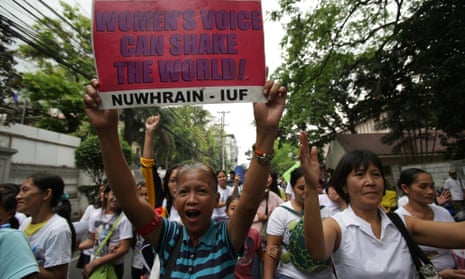“Let the 21st century be the century of women.” These were the words of the UN secretary general, Ban Ki-moon, when he launched his report on the post- 2015 development agenda. “The empowerment and rights of girls and women must be at the heart of everything we do,” said Ban.
Let’s hope the member states were paying attention.
In September, UN delegates will come together in New York to decide on the content of the sustainable development goals (SDGs), which will drive the global agenda on social, economic and environmental development for the next 15 years. Work thus far has resulted in 17 draft goals and 169 specific targets. The goals are broad and ambitious, but improving women’s health is not mentioned specifically in any of them and is referenced in just two targets.
Even a glance at the list of proposed goals makes clear that universal access to contraception and other sexual and reproductive health services is vital to achieving many of them. How can we end poverty if women and couples cannot determine whether or when to have a child, or how many to have? How can we ensure equitable education for all if so many girls drop out of school due to unwanted pregnancy? How can we achieve gender equality if women’s reproductive rights are not fulfilled?
The answer to all of these questions is the same: we can’t. But these are the questions that must be asked in September as UN delegates and civil society groups negotiate a final version of the SDGs.
For negotiations to take women’s wellbeing into account effectively, they must start with the basic facts. While more women are practising modern contraception today than a decade ago, contraceptive use has barely kept pace with global population growth.
New research from the Guttmacher Institute shows that a shockingly high number of women in developing regions still do not receive the services they need to protect their health and that of their newborns: 225 million women who want to avoid pregnancy are not using contraceptives and 43 million pregnant women face health risks by giving birth outside a health facility.
In addition, while increased access to antiretroviral therapy has changed the course of the Aids epidemic globally, increasing life expectancy significantly, nearly half of women who need treatment for HIV do not receive it.
The consequences are devastating: 74m unintended pregnancies, 28m unplanned births and 20m unsafe abortions each year. Some 290,000 women and 2.9 million newborns die each year, largely because of the lack of access to good-quality care during childbirth. In addition, 273,000 infants become infected with HIV during pregnancy and delivery or breastfeeding.
The rewards for providing these women and their newborns with the services they need are tremendous: unintended pregnancies would drop by 52m; 200,000 fewer women and 2 million fewer newborns would die every year and new HIV infections in newborns would be virtually eliminated.
Fully satisfying women’s need for modern contraception would also make healthcare investments more affordable overall. For every additional dollar invested in contraception in developing regions, the cost of pregnancy-related care –including HIV care for women and newborns – is reduced by about $1.50 (about £1).
Beyond these striking health gains, there is a huge payoff in terms of other social and economic returns. Girls and young women are more likely to be able to stay at school, improving their future participation in the labour force and earning potential. In turn, household savings and assets receive a boost. Poverty is reduced, living conditions improve and communities are better off when women can fully participate and contribute. All these benefits have direct impacts on a wide variety of other development goals.
In the months ahead, government negotiators and civil society will grapple with many competing priorities as they try to reach a consensus on a new global development agenda. And, undoubtedly, socially conservative countries and activists who are hostile to sexual and reproductive health rights will lobby against addressing these issues in the final goals.
But these core principles must not be compromised or negotiated away. UN delegates need to pay attention to the evidence that clearly establishes how investing in sexual and reproductive health benefits women, their families, their communities and their nations. If they don’t, half of humanity will continue to lag behind and true sustainable development will be impossible to achieve.
